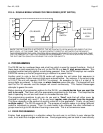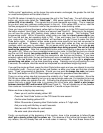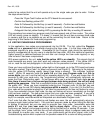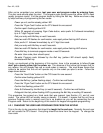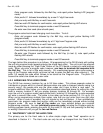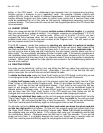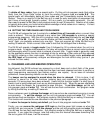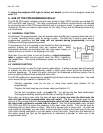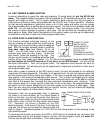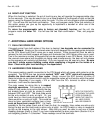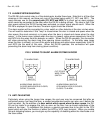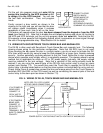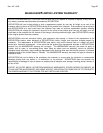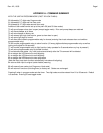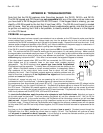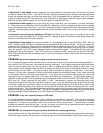
Rev. A.2, 10/03 Page-18
6.3 ANTI-TAMPER ALARM FUNCTION
A person attempting to guess the code and pressing 16 wrong digits will put the DK-26 into
alarm. The keypad's beeper and green LED will operate for 30 seconds during which time the
keypad will accept no input. This is usually sufficient to deter anyone from trying to guess a
valid code as millions of codes are possible with the DK-26’s true 10 digit operation. However,
for high security applications, particularly when a lot of User codes are active, you can assign
the programmable relay to operate during the alarm period. Put the unit into program mode and
enter 7-6. You will see the two flash confirmation. Then, exit program mode. You have now
the means to report attempts to guess a valid code. This can be done by interfacing with an
alarm panel or dialer. Note finally that selection of this option means you give up the opportunity
to implement a doorbell or other use of the programmable relay.
6.4 DOOR PROP ALARM FUNCTION
This function provides enhanced security at the
door by creating an alarm signal any time the door
is left open too long while being used for entry or
exit. With the function enabled, select a relatively
long door open time (see Section 4.5 to set
timer). You will then need a door switch whose
contacts open when the door opens. To wire the
door switch, follow the drawing to the right. You
will give up the function of disabling either the Hard
code or all the User codes (see Section 7.2). Put the unit into program mode and enter 8-2 to
put this feature on the HCD terminal or 8-3 to put it on the UCD terminal. You will see the
two flash confirmation. Then, exit program mode. The respective input terminal will have its
meaning redefined. You will also give up the opportunity to implement a doorbell or other use of
the programmable relay.
Now, when a code is entered (or the REX input is used), the door will release for the relatively
long period of time programmed. If the door is not opened at all, the lock will resecure when the
set time expires and nothing further will happen. If the door is opened and recloses before the
time expires, it will resecure immediately upon closure. This is called anti-tailgating and means
that although you have selected a long release time, a second person will not be able to use the
door after a first person has, because the door resecures immediately upon reclosure. If the
door remains open for a longer period of time than is set on the timer, the programmable relay
will switch and will remain energized until the door closes or the keypad is used again. Note
that if you are using the programmable relay for another function you can enable anti-tailgating
alone (no alarm signal) as is described in Section 7.4.
Connection from the programmable relay is generally
not made to an alarm system, as if an alarm system is
active on the door, you can get the same “door open too
long” signal more simply by using the second pole of the
lock control relay to shunt the door switch (see Section
7.3). Generally, you mount a Sonalert on the CPU
board enclosure. It will sound if the door is left open too
long and this will act as a prompt for someone near the
door to close it. Sonalerts operate on 12-24 VDC so the wiring shown on the drawing to the
right should be used.
To terminate this function and return the HCD or UCD input to its standard use (and return the
programmable relay to the doorbell function), put the unit into program mode and enter 8-4.
You will see the two flash confirmation. Then, exit program mode.
SRC
UCD HCD
CONNECT A DOOR
SWITCH WHICH
OPENS WHEN THE
DOOR OPENS TO
UCD OR HCD
DEPENDING ON WHICH
COMMAND YOU CHOOSE
DOOR SWITCH
CX NOX
DC IN /OUT
+
SONALERT
AUDIBLE DOOR PROP ALARM



